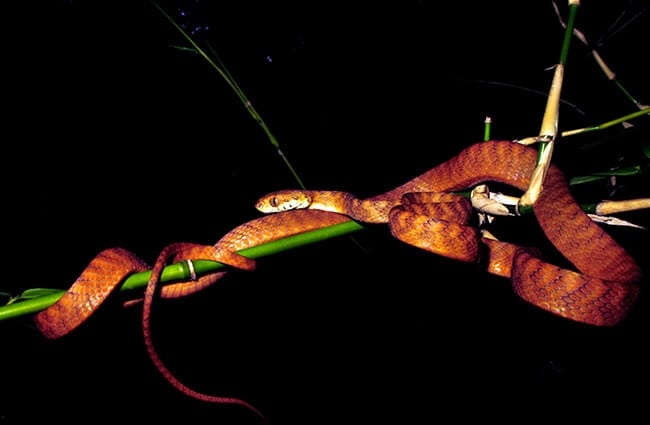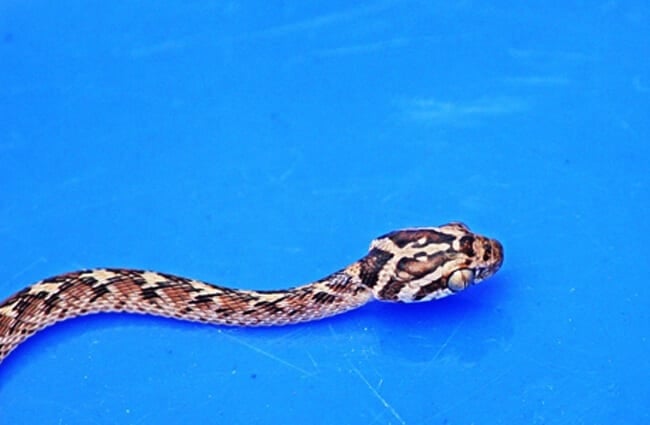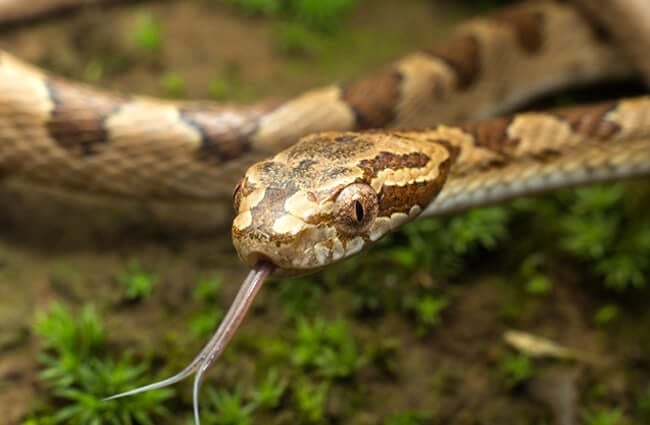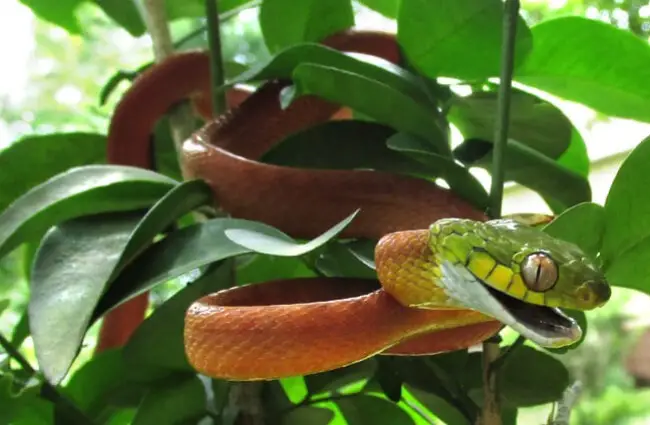The world of snakes is remarkably diverse, and among its most intriguing members is the cat snake. These elusive reptiles, named for their characteristic cat‑like eyes and often docile temperament, present a fascinating study in adaptation, behavior, and ecological role. This comprehensive guide delves into the life of cat snakes, exploring their habitats, diet, reproduction, and interactions with both the environment and humans.

What are Cat Snakes?
Cat snakes belong to the genus Boiga, a group of rear‑fanged snakes found throughout Asia, Africa, and parts of Australia. Several species fall under the ‘cat snake’ designation, each exhibiting slightly different characteristics. Generally, they are relatively slender snakes, known for their large, elliptical pupils that give them excellent night vision—hence the name. Their coloration varies widely, from browns and grays to vibrant oranges and reds, often with intricate patterns that aid in camouflage.
Identifying Characteristics
Key features that help identify cat snakes include:
- Pupils: Distinctive vertical, elliptical pupils resembling those of a cat.
- Fangs: Rear‑fanged, meaning the venom‑delivering fangs are located towards the back of the mouth.
- Scales: Smooth scales, giving them a sleek appearance.
- Size: Typically moderate in length, ranging from 3 to 6 feet depending on the species.
Habitat and Distribution
Cat snakes are primarily arboreal, meaning they spend much of their lives in trees and shrubs. This lifestyle dictates their habitat preferences. They are commonly found in:
- Tropical rainforests: Dense foliage provides ideal cover and hunting grounds.
- Mangrove swamps: The intricate root systems offer shelter and access to prey.
- Plantations: Areas with a mix of trees and shrubs, such as cocoa or rubber plantations, can also harbor cat snakes.
- Secondary forests: Areas of regrowth following disturbance can support cat snake populations.

The distribution of cat snakes varies depending on the species. Some are localized to specific islands, while others have a broader range across Southeast Asia, India, and parts of Africa. The Malayan cat snake (Boiga multitemporalis) is widespread throughout Southeast Asia, whereas other species have more restricted ranges.
Diet and Hunting Strategies
Cat snakes are primarily nocturnal hunters, specializing in a diet of small vertebrates. Their preferred prey includes:
- Lizards: A staple of their diet, often caught in trees or on the ground.
- Frogs: Hunted in damp environments, particularly during the rainy season.
- Birds: Small birds and nestlings are occasionally taken.
- Rodents: Though less common, rodents can be part of their diet.
- Snake Eggs: Some species are known to consume the eggs of other snakes.
Their hunting strategy involves a combination of ambush and active foraging. They patiently lie in wait, blending into the foliage, and strike when prey comes within range. They subdue their prey with a mild venom, delivered through their rear fangs. While not considered highly venomous to humans, a bite can cause localized pain and swelling.

Reproduction and Life Cycle
The reproductive behavior of cat snakes varies among species, but generally follows a similar pattern. Most cat snakes are oviparous, meaning they lay eggs.
- Mating: Occurs during the warmer months, often involving elaborate courtship displays.
- Egg‑laying: Females typically lay clutches of 5 to 20 eggs in tree hollows, under leaf litter, or in other protected locations.
- Incubation: The eggs incubate for approximately 60 to 90 days, depending on the temperature.
- Hatchlings: Young cat snakes are independent from birth and immediately begin hunting for small prey.
- Maturity: Reach sexual maturity in 2 to 3 years.
Lifespan in the wild is not well documented, but it is estimated that cat snakes can live for 5 to 10 years.
Ecological Role and Interactions
Cat snakes play an important role in their ecosystems as predators of small vertebrates. They help to regulate populations of lizards, frogs, and rodents, contributing to the overall health and balance of the environment. They, in turn, serve as prey for larger predators such as birds of prey, mammals, and other snakes.

They also interact with humans, both positively and negatively. While generally docile, they can be defensive if threatened. They sometimes enter human dwellings in search of prey, leading to encounters with people. In agricultural areas, they can be beneficial as they control populations of pests like rodents.
Cat Snakes and Humans: Safety and Conservation
Encounters with cat snakes are generally harmless. They are not aggressive and will usually retreat if given the opportunity. However, it is important to exercise caution:
- Do not handle wild snakes.
- If you encounter a snake in your home, remain calm and contact a professional wildlife removal service.
- Keep your property clear of debris and overgrown vegetation to reduce the likelihood of attracting snakes.
Many cat snake species are not currently considered endangered, but habitat loss and degradation pose a threat to their populations. Conservation efforts focused on protecting forests and other natural habitats are essential for ensuring their long‑term survival.

For the Aspiring Zoologist: Advanced Information
The genus Boiga is a fascinating area of ongoing research. Phylogenetic studies are helping to clarify the relationships between different cat snake species and to understand their evolutionary history. Research is also being conducted on their venom composition and potential medicinal applications. Furthermore, studies on their foraging behavior and habitat use are providing valuable insights into their ecological roles.
Caring for Cat Snakes in Captivity
Keeping cat snakes in captivity requires specialized knowledge and commitment. A proper enclosure should be spacious, secure, and provide a suitable environment with appropriate temperature, humidity, and hiding places. Their diet should consist of appropriately sized prey items, such as mice or lizards. Regular monitoring of their health and behavior is essential, and veterinary care should be readily available.

In conclusion, cat snakes are remarkable reptiles that deserve our appreciation and protection. Their unique adaptations, ecological roles, and intriguing behaviors make them a valuable part of the natural world. By understanding and respecting these creatures, we can help ensure their survival for generations to come.

![Red Angus Closeup of a beautiful Red Angus cowPhoto by: U.S. Department of Agriculture [pubic domain]https://creativecommons.org/licenses/by/2.0/](https://animals.net/wp-content/uploads/2020/03/Red-Angus-4-238x178.jpg)




![Red Angus Closeup of a beautiful Red Angus cowPhoto by: U.S. Department of Agriculture [pubic domain]https://creativecommons.org/licenses/by/2.0/](https://animals.net/wp-content/uploads/2020/03/Red-Angus-4-100x75.jpg)

